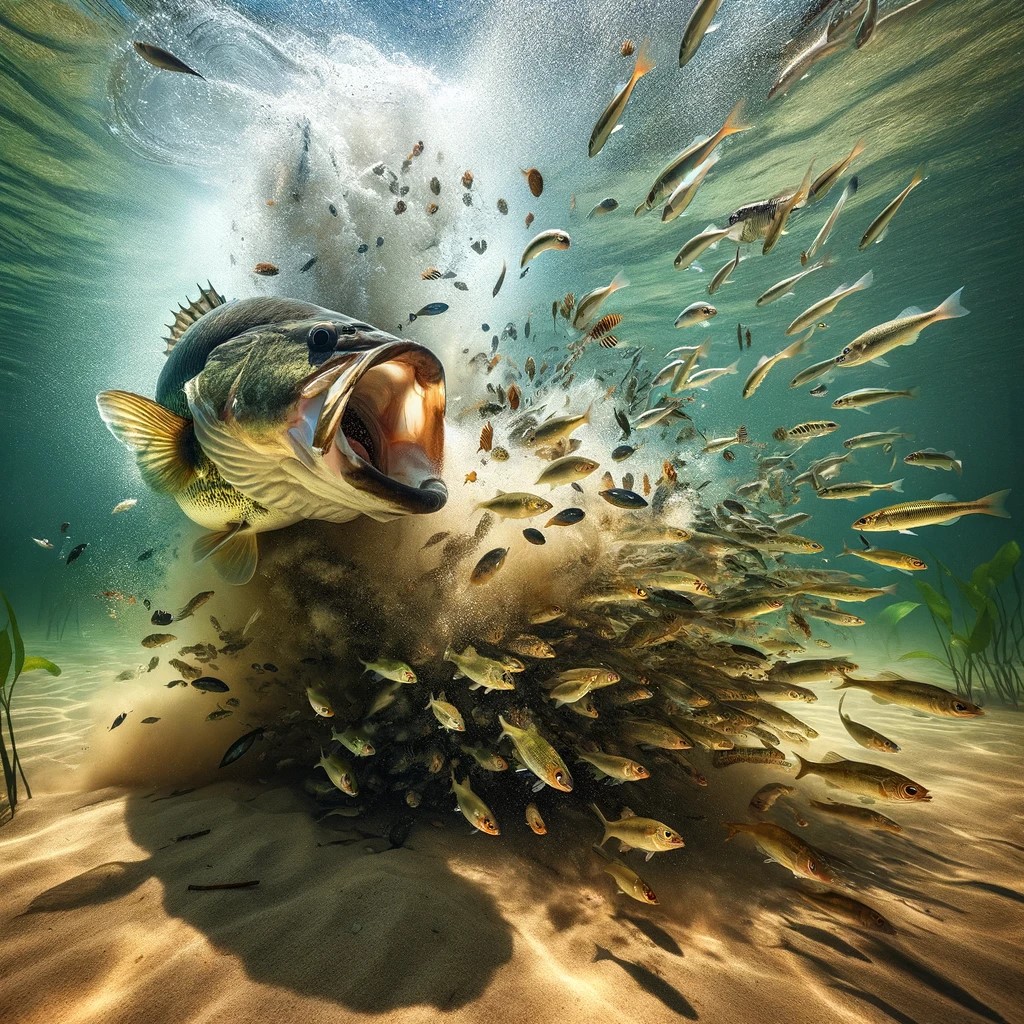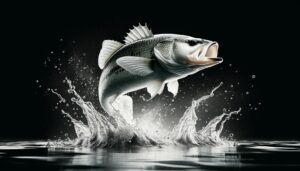Bass fishing is a thrilling pursuit for many anglers, and part of the excitement lies in understanding the behavior of these elusive freshwater predators. Bass, including largemouth and smallmouth bass, exhibit unique behaviors influenced by factors such as water temperature, habitat, and seasonal patterns. In this guide, we’ll delve into the intricacies of bass behavior, providing valuable insights to enhance your bass fishing experience.
Habitat Preferences:

Bass, particularly largemouth and smallmouth species, exhibit distinct habitat preferences that are essential for their survival, growth, and reproduction. Largemouth bass are commonly found in warm, still waters with abundant aquatic vegetation, which provides them with cover for ambushing prey and protection from predators. They thrive in a variety of freshwater environments including ponds, lakes, reservoirs, and slow-moving rivers or streams. The presence of structures such as submerged logs, rock piles, and man-made features like docks and pilings further attract largemouth bass by offering ideal spots for feeding and spawning. These environments also support a rich food web, including smaller fish, crustaceans, and insects, which are crucial for their diet.
Smallmouth bass, on the other hand, prefer clearer, cooler, and more oxygenated waters, often found in flowing streams, rivers, and the rocky areas of lakes. They are particularly drawn to habitats with a strong current and a rocky bottom, where they can find crayfish and other invertebrates, which constitute a significant portion of their diet. Smallmouth bass use the current to their advantage, waiting in eddies or behind structure to ambush passing prey. Both species’ habitat preferences are influenced by water temperature, oxygen levels, and the availability of food, making them adaptable to a range of aquatic environments. However, they also face challenges from habitat degradation, pollution, and water temperature changes, which can impact their distribution and population health.
Feeding Patterns:

Bass, both largemouth and smallmouth, are known for their opportunistic feeding habits, which are largely influenced by water temperature, time of year, and availability of prey. During the warmer months, bass tend to be more active and feed aggressively, often at dawn and dusk when the light levels make it easier for them to ambush prey. They primarily target smaller fish such as shad, minnows, and bluegill, but their diet can also include crayfish, frogs, insects, and even small birds or mammals that happen to fall into the water. The structure of the aquatic environment, such as weed beds, submerged logs, and rock formations, plays a significant role in their feeding patterns, as bass often use these areas for ambush.
Seasonal changes bring about notable shifts in bass feeding behavior. In the spring, as water temperatures begin to rise, bass move into shallower areas to spawn and are known to aggressively defend their nests, striking at almost anything that comes too close, which can be mistaken for feeding. Post-spawn, their focus shifts back to feeding as they recuperate, often targeting abundant and easy-to-catch prey. Conversely, during the colder months, bass become more lethargic and their metabolism slows down, leading them to prefer slow-moving or stationary prey and deeper, warmer waters. Understanding these patterns is crucial for anglers aiming to successfully catch bass, as it informs decisions on bait selection, fishing location, and technique.
Click here to see some of the best bass fishing lures
Seasonal Variations:

Bass exhibit distinct seasonal patterns that influence their behavior, feeding habits, and location within their habitats. In the spring, as water temperatures rise, bass move from their winter deep-water haunts to shallower areas to spawn. This period is marked by aggressive feeding as bass prepare for the energy-intensive spawning process. Anglers often find spring to be an excellent time for fishing, as bass are more active and likely to strike at baits and lures. Post-spawn, bass may experience a brief period of lethargy as they recover, but soon after, they resume active feeding to replenish their energy reserves.
Come summer, bass often seek deeper, cooler waters during the hottest parts of the day and become more active during cooler mornings and evenings. They might also be found in shaded or vegetated areas where they can stay cool and ambush prey. As fall approaches, water temperatures begin to drop, prompting bass to feed heavily in preparation for the winter months. This is known as the fall feed-up, and it provides anglers with another prime fishing opportunity as bass become less selective and more aggressive in their feeding. During winter, bass metabolism slows down, and they retreat to deeper waters where temperatures are more stable. They become less active, feeding less frequently, which can make winter bass fishing challenging but rewarding for those who understand these seasonal patterns and adapt their strategies accordingly.
Reproductive Behavior:

Bass, a term often referring to both freshwater and marine species, exhibit fascinating reproductive behaviors that are crucial for their survival and proliferation. In freshwater environments, such as lakes and rivers, largemouth and smallmouth bass, for example, engage in a ritualistic spawning process typically in the spring when water temperatures reach about 60 to 70 degrees Fahrenheit. Males prepare the spawning grounds, creating circular nests in shallow waters by sweeping away debris with their tails. These nests are strategically located to protect the eggs from predators and to ensure adequate oxygenation. Once the nest is ready, males entice females to lay their eggs by performing a series of movements and nudges. After the eggs are laid, the male fertilizes them and takes on the role of protector, aggressively guarding the nest from any potential threats until the hatchlings emerge and are capable of fending for themselves.
Marine species of bass, like the striped bass, exhibit a different reproductive strategy, often involving mass spawning where numerous individuals come together in estuaries or near the coastline. This event usually occurs in the spring or early summer, when water temperatures and currents are optimal. Females release millions of eggs into the water column, while males simultaneously release sperm, ensuring a high probability of fertilization. This method, known as broadcast spawning, relies heavily on water conditions to disperse and mix the gametes. Unlike their freshwater counterparts, marine bass do not exhibit parental care; once the eggs are released and fertilized, they are left to develop and fend for themselves, relying on the safety of numbers and the nurturing environment provided by the estuarine waters to increase their chances of survival to adulthood.
Check out these great bass fishing products to help get you startedConclusion:
Successful bass fishing is not just about choosing the right lures and techniques; it’s about understanding the behavior of these remarkable fish. By recognizing their habitat preferences, feeding patterns, and seasonal variations, anglers can increase their chances of a successful day on the water. Patience, observation, and a willingness to adapt to changing conditions are key elements in unlocking the mysteries of bass behavior and mastering the art of bass fishing. So, next time you cast your line into the water, remember that a deeper understanding of bass behavior can make all the difference between a quiet day on the lake and an exhilarating bass-catching adventure.




